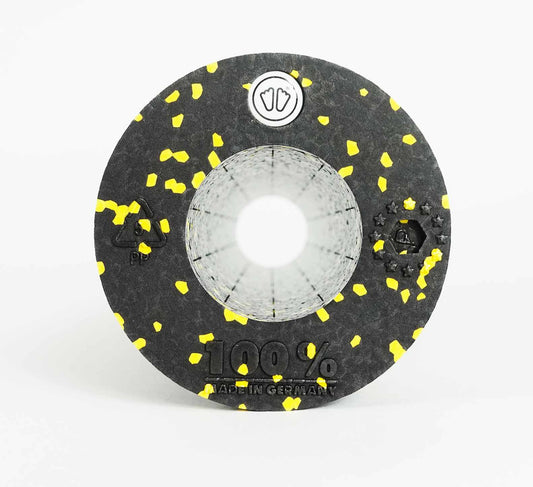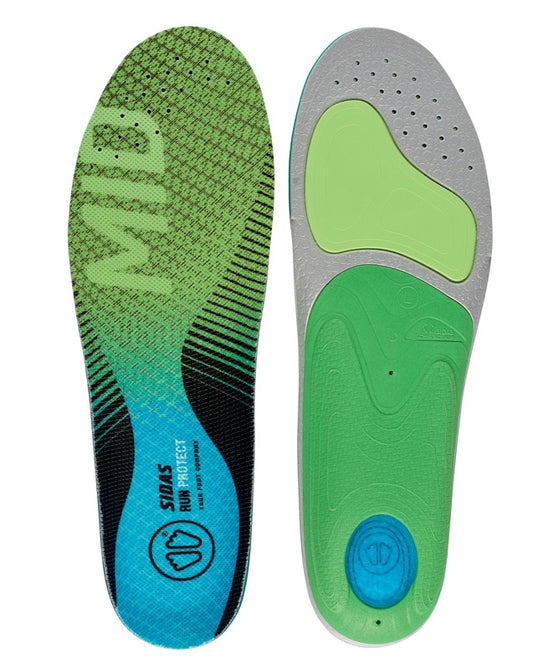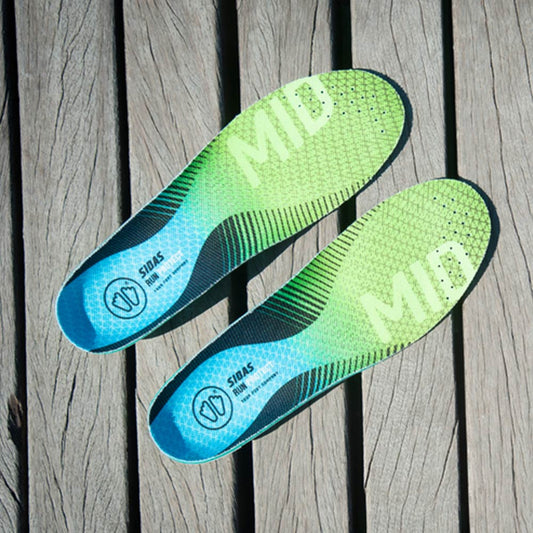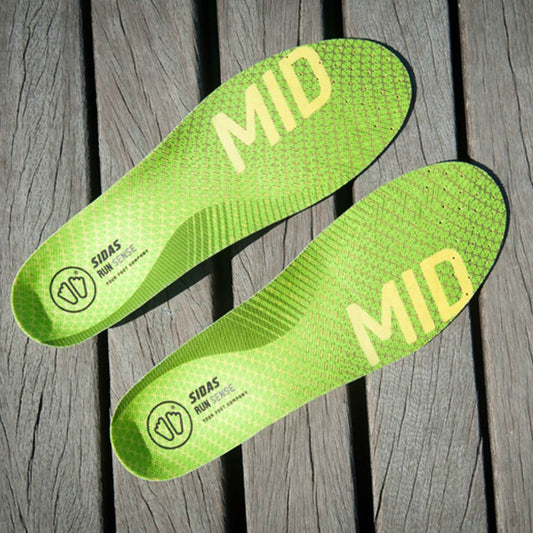Foot stretching, a runner's best friend with Hassan Chahdi

Stretching in running is like philosophy: there are different schools of thought. Some recommend it, others don't. At Sidas, we've been surrounded by foot experts and top athletes for nearly 50 years, and we've chosen our camp: we're convinced that stretching plays a primordial role in preventing injuries, optimising recovery and improving sports performance. On the other hand, although runners often have the right reflex to stretch their adductors, thighs, calves, and hamstrings, they rarely stretch their fundamental tool: their feet!
Discover with us why and how to stretch your feet, with a suggestion for some simple and effective exercises to be done at home. This, in the company of Hassan Chahdi, French elite marathon runner.
FOOT STRETCHING: WHY IS IT IMPORTANT?
Foot stretching has three main, interrelated goals: optimizing recovery, preventing injury, and improving performance. And regular stretching has both short and long term benefits.
Optimising short-term recovery
Practised at rest, at a good distance from training, once the body has cooled down, static stretching helps recovery by facilitating venous return. Indeed, feet are made up of 23 muscles that are put to the test during exercise, which need to be relaxed. This is done by making the blood circulation more fluid in order to assimilate more quickly the muscular micro-lesions caused by the repetition of shocks and thus fight against the appearance or even fight for the disappearance of "aches".
Preventing long-term injury
A less contracted foot, a less tense arch of the foot, and less overall muscle stiffness are signs that the body is more willing to run because it is less tired. In other words, a well-stretched foot is a more stable foot and more serene when faced with stress. As the foot is the base of the runner, if it is relaxed, the risk of modifying the way of running as the kilometres go by because of fatigue and therefore of falling into the phenomenon of compensation of the stride which often causes injuries, is much less important.
Thus, stretching the foot is a good practice to protect oneself in the long term from all the typical pathologies of the runner such as tendonitis, muscle contractures, or even sprains.
Optimising long-term performance
Finally, a stretched foot is a more alert, more precise and more dynamic foot. In other words, a relaxed foot will perform better because it will have regained all its muscular flexibility and articular amplitude between two sessions.
HOW TO STRETCH YOUR FEET?
The body is the working tool of an athlete. The feet are the fundamental value of a runner. This is why Hassan Chahdi, currently the best French marathon runner, takes care of them like the apple of his eye. Before his departure for the Tokyo Olympic Games, he shows us some simple and effective exercises that can be done by everyone at home.
EXERCISE 1: The arch of the foot
Standing facing a wall, press your forefoot against the wall while your heel remains on the ground. The other foot, positioned backwards, allows you to stabilise yourself. Apply pressure to the foot resting against the wall by leaning forward slightly, in order to mobilise the arch of the foot and feel it stretch.

EXERCISE 2: The arch of the foot (bis)
Sit on the floor and extend your legs. With your chest upright, grab your forefeet and bring them towards you, exerting tension with: your hands, if you are flexible enough; a towel, belt, or elastic band, for greater comfort and ease.
EXERCISE 3: Calves
Once again positioned 50 centimetres from the wall in front of you, take a step back with the leg you wish to stretch, heel firmly on the ground. Bend your front leg slightly and push the wall in front of you even more lightly so that you stretch the calf of your outstretched back leg.

EXERCISE 4: Calves (bis)
Stand on a step in the direction of going up. Place the forefoot of the leg you want to stretch on the edge of the step so that the heel falls. The other foot is firmly planted on the step so that you remain stable. At this point, apply downward pressure to stretch the calf and Achilles heel that are resting in the void.
EXERCISE 5: Lifts
Kneel down and sit with your buttocks on your heels. Use your arms to lean back to raise your knees and trace a straight line between them and your head. The torso should remain straight and the toes in contact with the floor. You can now feel the anterior tibial muscle and the tendons of the instep being stretched.
EXERCISE 6: Toes
This stretch is so simple that you rarely think to do it. Sitting in a chair, cross your legs and bring one of your feet towards you. Grasp the individual toes - from big to small - of the foot on your thigh and stretch them towards you, using only your hands.
Here are some tips on how to foster stretching:
- Do these stretches once or twice a week. Depending on the number of training sessions you do and the amount of fatigue your feet experience.
- Do these static stretches when you are cold, once your body has cooled down, at a good distance from your running session (at least 2 hours after).
- Choose a quiet place where you can concentrate on yourself and your sensations. Stretching should create a moment of calm and serenity.
- Pay attention to your breathing, by "overplaying" the inhale and exhale.
- Apply recurrence in your exercises. Ideally, do each stretch for 30 seconds, 2 or 3 times for each leg. In total, the session can last about 20 minutes. Don't hesitate to use a stopwatch to ensure that you stick to this rigour.
- Never go to the point of pain. You should feel that the muscle is stretching, that it is working, but not in pain.
Complement these stretches with other elements that help take care of your running feet:
- Self-massage with our Cryo Gel
- Arch massage by rolling this dedicated BlackRoll
- Wear insoles that support your arch and help distribute pressure during exercise.
- Leave your trainers behind for the comfort of these recovery sandals, which promote venous return and support the arch of the foot. What better feeling after a run than to recover with your feet in the open air?









